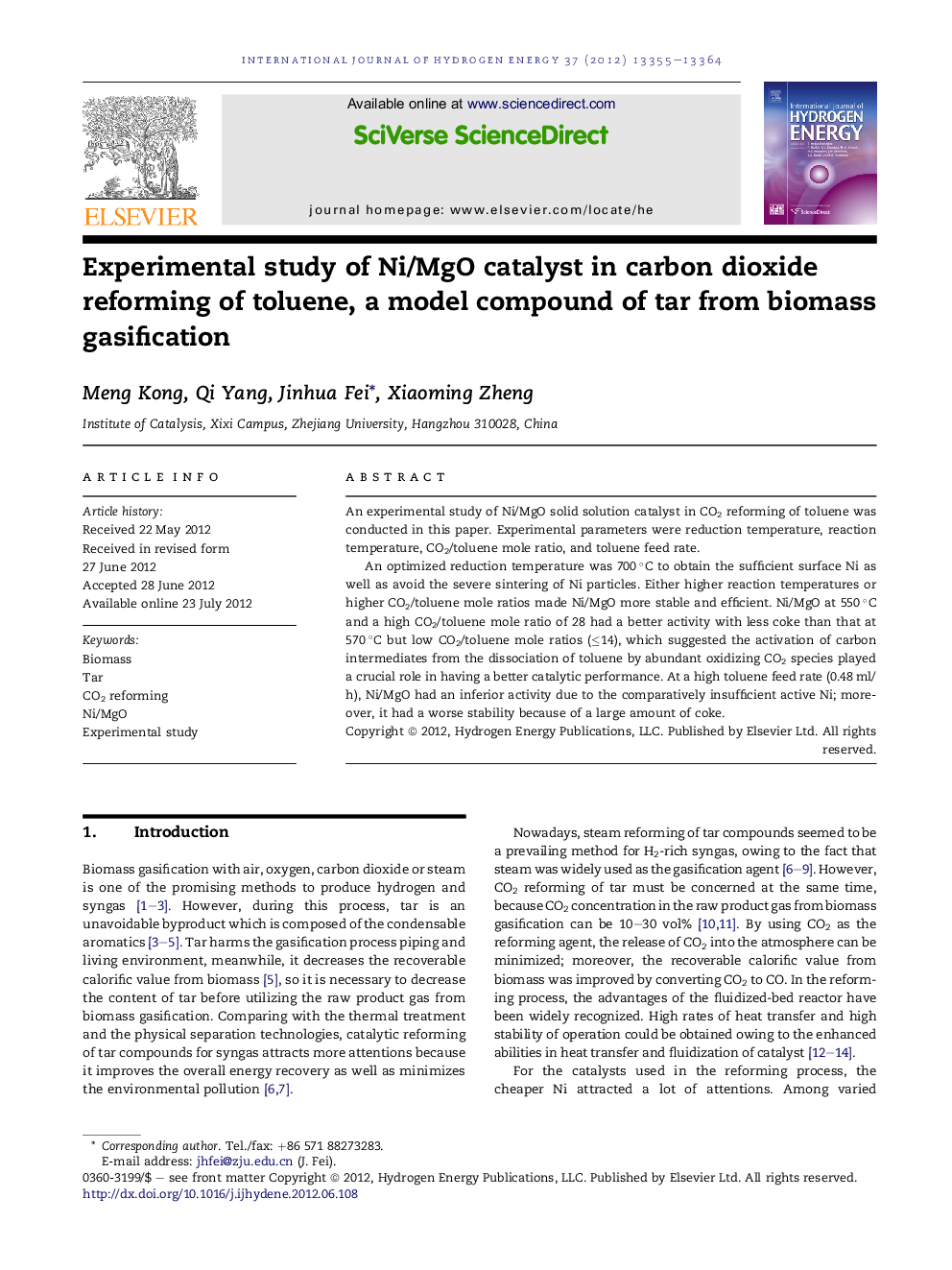| کد مقاله | کد نشریه | سال انتشار | مقاله انگلیسی | نسخه تمام متن |
|---|---|---|---|---|
| 1282230 | 1497551 | 2012 | 10 صفحه PDF | دانلود رایگان |

An experimental study of Ni/MgO solid solution catalyst in CO2 reforming of toluene was conducted in this paper. Experimental parameters were reduction temperature, reaction temperature, CO2/toluene mole ratio, and toluene feed rate.An optimized reduction temperature was 700 °C to obtain the sufficient surface Ni as well as avoid the severe sintering of Ni particles. Either higher reaction temperatures or higher CO2/toluene mole ratios made Ni/MgO more stable and efficient. Ni/MgO at 550 °C and a high CO2/toluene mole ratio of 28 had a better activity with less coke than that at 570 °C but low CO2/toluene mole ratios (≤14), which suggested the activation of carbon intermediates from the dissociation of toluene by abundant oxidizing CO2 species played a crucial role in having a better catalytic performance. At a high toluene feed rate (0.48 ml/h), Ni/MgO had an inferior activity due to the comparatively insufficient active Ni; moreover, it had a worse stability because of a large amount of coke.
Experimental study for toluene reforming with CO2 on Ni/MgO catalyst.Figure optionsDownload as PowerPoint slideHighlights
► Tar reforming with CO2 was used to minimize CO2 release from gasification.
► Experimental study of Ni/MgO catalyst was studied for a possible application.
► The sufficient surface Ni amount was fundamental to have a high activity.
► The quick oxidation of surface carbon by CO2 was crucial for catalytic stability.
► Two types of coke under high toluene feed rate were detected by CO2-TPO test.
Journal: International Journal of Hydrogen Energy - Volume 37, Issue 18, September 2012, Pages 13355–13364